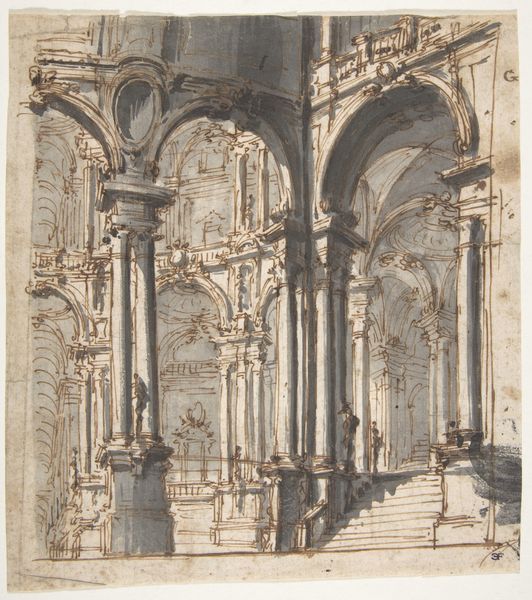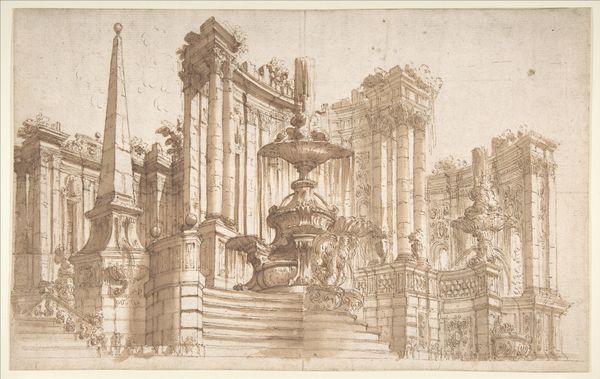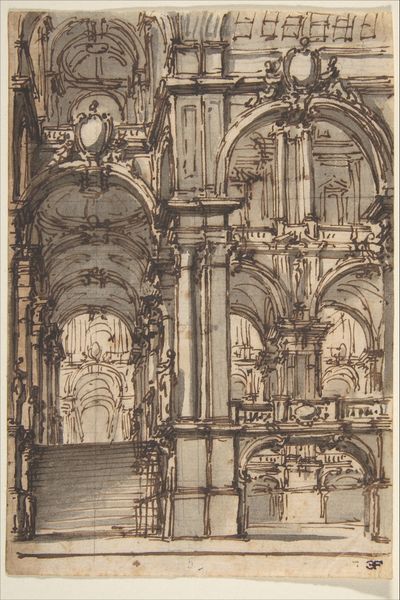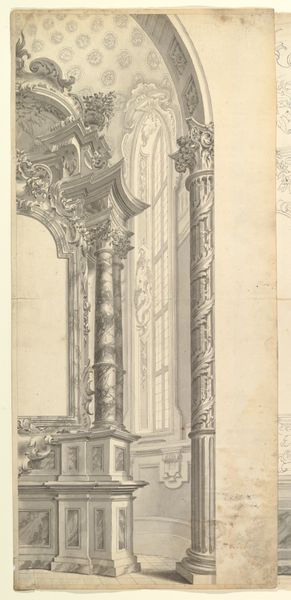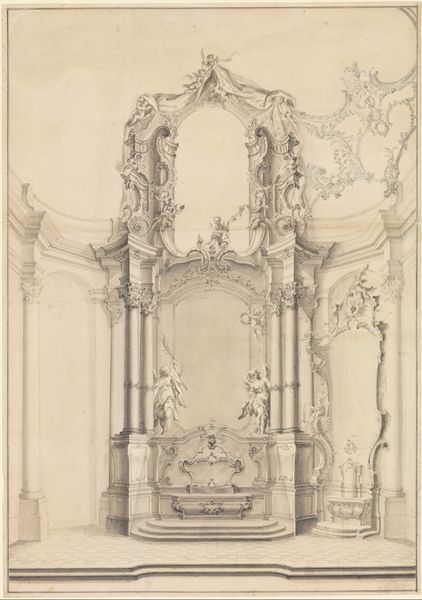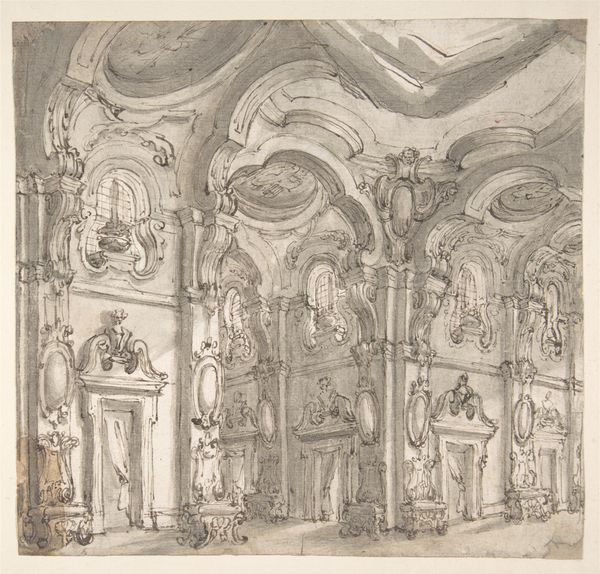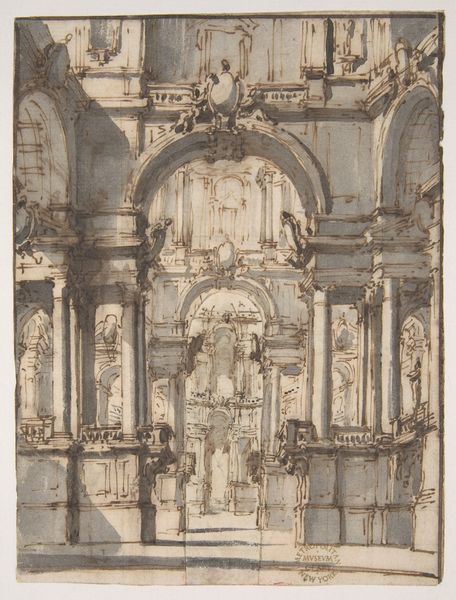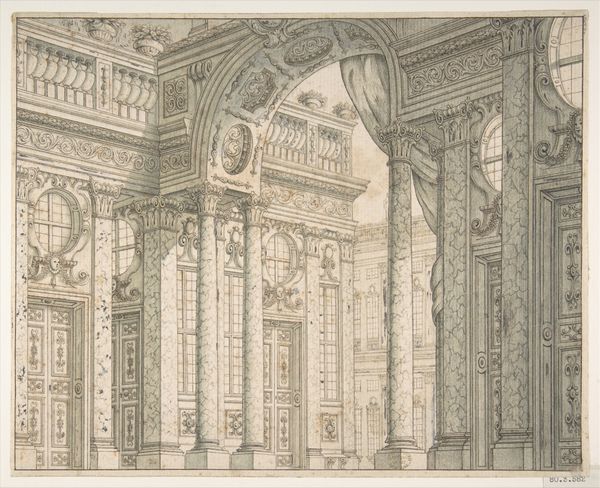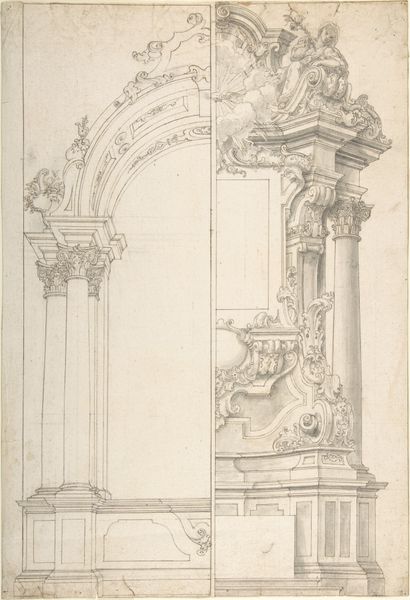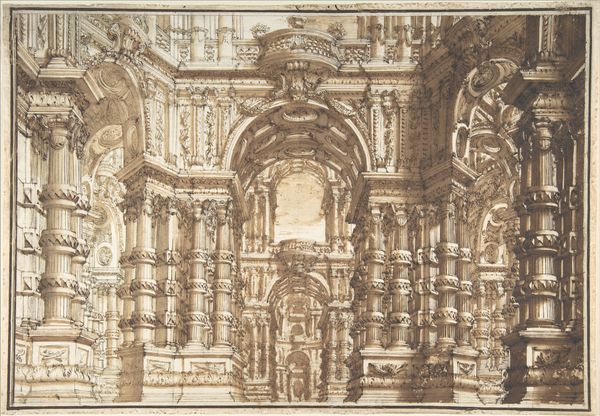
drawing, ink, architecture
#
drawing
#
baroque
#
etching
#
ink
#
cityscape
#
history-painting
#
architecture
Dimensions: sheet: 27.7 x 25.4 cm (10 7/8 x 10 in.) image: 25.3 x 25.4 cm (9 15/16 x 10 in.)
Copyright: National Gallery of Art: CC0 1.0
Editor: So, this is Ferdinando Galli Bibiena's "Stage Design of Garden Pavilions," from around 1711, rendered in ink. It gives off a grand, theatrical sort of vibe. What do you see in this piece? Curator: This drawing reflects the Baroque period’s fascination with spectacle and the power of visual imagery in shaping public perception. The garden pavilions weren’t just architecture, but stages for social and political theater. How do you think the setting would have impacted the audiences witnessing performances here? Editor: Well, with the grandeur of the pavilions, wouldn’t it amplify whatever message the performance was trying to convey? It feels like propaganda, almost. Curator: Precisely. Consider the patrons who commissioned such designs. Were they merely seeking aesthetic pleasure, or was there a strategic element at play? The aristocracy often used such displays to project power and wealth, reinforcing social hierarchies. This style even seeped into civic architecture, blurring lines between performance and everyday life. Do you see any evidence of that blurring here? Editor: I guess the pavilions themselves seem almost too elaborate to be just functional structures, more like permanent stage sets than simple garden features. It also makes me think of the contemporary debates around public funding for the arts. Back then, it was about solidifying power. Now, it's more complex. Curator: Indeed, the role of patronage and public accessibility remains a recurring theme. The Baroque aesthetic, though visually stunning, served specific political agendas. What is something that resonates with you? Editor: Thinking about the historical context really shifts how I see this piece. It is no longer just an attractive drawing. It highlights how art is always shaped by social forces, and can also perpetuate them. Curator: Exactly. Art, especially works intended for the public, carries a responsibility that extends beyond aesthetics. I find it a great reminder for today's creative endeavors.
Comments
No comments
Be the first to comment and join the conversation on the ultimate creative platform.
